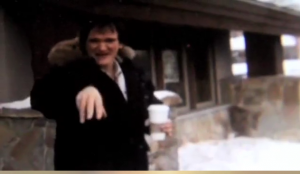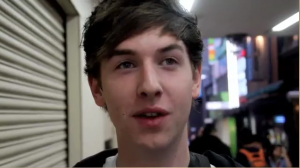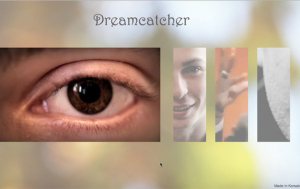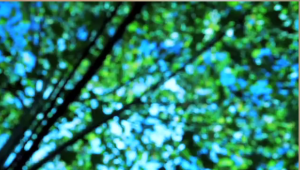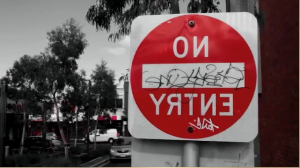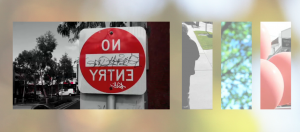“The Shivers” – A Korsakow Film by Edward Wong, Gina Michael and Stephanie Larkin
Background:
For our K-Film, The Shivers, there was extensive brainstorming, experimenting, researching and continual redevelopment involved in achieving an outcome, which we found satisfied the essence of the medium we are using. As a group, after discussing potential ideas, we decided to narrow the broad concept down to the theme of fear; being something that we believed would be fascinating to explore, as it is something we choose not to face rather, to ignore unless faced with it. Within the following couple of weeks of discussion we managed to establish a direction for our film, as fear on its own proved an enormous concept, which we could potentially lose sight of the specificity of our piece. Therefore, we decided to narrow down this broad topic by exploring fear on a personal level to people of varying age, but coming to this decision required both an understanding of the technical possibilities Korsakow and a thorough knowledge of creative potentials that can be explored and portrayed through this program.
If we are to acknowledge the Korsakow medium from both its technical and creative possibilities as a whole we need to think about things such as how “the juxtaposition by itself of course does not result in montage, it is up to the filmmaker to construct a logic that determines which images appear together, when they appear and what kind of relationships they enter into with one another.” (Soar, 2014). This was something integral to consider and understand when determining the direction of our own Korsakow film. This point strongly emphasises the importance of not perceiving pieces of content on an individual basis, one which is mutually exclusive from other content, but more so to recognise the significance of how the content is collectively combined in order to form connections and effectively meaning through these relations. With this in mind we had to ensure that we thought not so much about how an audience might relate to seeing an individual clip of something related to fear, but how we could enable them to respond to the multiple clips through the relationship they share to one another. It is through this understanding that we were able to develop the idea into something that explored the connections between fear experienced through people throughout the different stages or their life or in other words, at different ages.
Another important term to consider when producing our K-film was that of narrative, and how it can be adapted or should be thought about in order to be effective within the Korsakow structure. It is suggested by Marie-Laure Ryan (2006) that in order to allow for the constant influx of new forms of media, perhaps the definition of narrative requires expansion. Ryan also recognises, however, that there must be restriction to this expansion as it would be unrealistic to consider all texts across all mediums as narrative. From this idea of broadening though, it can be recognised that Korsakow can indeed find it’s own place in story telling. In the case of our film we are telling a story through the connections of the fears between different people of various ages. Although each segment of our film tells a story on an individual level, it is through the unique structure that Korsakow allows that the audience is able to decipher their own narrative meaning through the connections that they are able to make between each clip.
One final area that was imperative to understanding Korsakow and how it could be used in relation to the idea for our film was lists. To some extent making a K-film revolves a lot around lists of things; lists of video clips; lists of audio; lists of keywords; lists of words within each keyword etc. It is, however, through identifying the meanings surrounding each list present in a Korsakow film (things such as how they work together and how their contents is determined and arranged) that a true understanding of what your film is about and the meanings of connections you are trying to make are realised.
Furthermore, “the list as a structuring device in creative screen based documentary is a formal approach that also speaks of the infinite possibilities in combining and making connections across a networked field of elements. Components are gathered and assembled according to a logic that may be thematic, topical, place based or conceptual but the relationship between parts is kept loose” (Frankham, 2013). I feel that from this comment the list like structure and their relevance in regards to being somewhat a feature in Korsakow is explained. The abstract definition of a list given by Frankham is in some ways effectively even describing the program. Through understanding the phrase, I believe our group was fully able to recognise structure of Korsakow this, in term, allowing us to determine the structure it would take.
Deconstruction of Technical/Creative Aspects and Final Product:
We initiated with this concept of fear and wanted to explore the way fear develops over the lifespan. In order investigate and present a unique perspective on fear through the different stages of life however, we had to first consider a variety of possible ways in which we might best do this. Eventually we came to the agreement that the best way of exploring our topic would be to hear from people themselves, as this would give the film a real and engaging voice. In order to go about achieving this we set out to interview a minimum of 60 individuals across all different ages, asking them what they feared and why. It was also decided at this point that in order to be less invasive to these people we would only take voice recordings and not use any images of the person themselves. As a result of this it meant that we were required to gather both audio and video material but I feel that this, in term, worked to strengthen our film. This is as if we had simply filmed our subjects stating their fears, firstly, there is a good chance they may have been less open in their responses given intimidation that sometimes surrounds presence of a camera. More so, however, we felt the meaning of the fear itself might be lost, as attention would be drawn more to the subject and less about what they were saying.
In regards to the video content featured in our film, we decided to take quite a different approach to most other groups in our class and also in comparison to a lot of the past examples of K-films that we viewed. We used a combination of both footage taken by group members individually and also stock footage that we had all worked together to source. The nature of our film was different in that, although we had an idea of what we wanted to achieve and how we would go about doing it, we could not predict the responses we would obtain from our subjects and therefore could not strictly plan the sorts of video material that we would require. The idea behind the video that was matched with the audio was that in some circumstances it would be fairly logical and what it showed would match the fear that was being explained. On other occasions though the footage would be more abstract, this working in times where the fear wasn’t necessarily a physical thing and also in times where the person’s response triggered a specific mood. As we obtained more audio information we were able to gradually build up the video material that would accompany. In some cases this could be easily achieved through going and filming something that we felt fitted in with what was being said in an interview. However, as fear can sometimes be a fairly abstract idea, this is where stock footage became a really valuable resource. With stock footage we were able to accompany interviews with images that would not be possible for us to obtain ourselves. It ultimately gave us the power to really explore different ideas and for our audience, I feel that there will be a lot more left to the imagination and the potential for many more connections to be determined.
We played around with interface. Firstly, we designed one that kind of represented this idea of the circle of life in that the SNU’s made up a circle. However, we realised it was a bit too chaotic and would distract from the content itself. Therefore, we decided to go with a simple design for our interface. We chose to have the dominant frame in which to play the SNU’s centred on top of the three smaller SNU’s that reside below it. Similarly, we place a clown in the background image to allude to the concept that fear may remain the same through childhood, teenage years and adulthood. However, this distracted further from the videos and the wide range of colours was too intense for the abstract ideas we aimed to achieve. Ultimately, we decided to have a background image of white at the top of the image, fading down to black. The reason behind this is so that the SNU, when played appears in the white section of the image, metaphorically alluding to the idea that, when one faces their fears, they don’t appear as frightening as when we do not face them.
In order to categorise the content we chose three distinct colour filters to put over the snu thumbnails. For objects fears, the colour blue was chosen; for fearful situations the colour yellow was chosen, and for philosophical based fears we chose red. The driving force behind this decision was so as to create a proper connection between the interface, pattern and the content. Furthermore, the interface appeared more organised because of the colour coding, which in turn, further enhances the audience understanding of the colour and content patterns.
Although we generally feel that our content, interface and constructed patterns have worked together to effectively produce a presentation of fear throughout the different stages of life, there are some things that we believe we could have done to enhance our work. One of these things would have been to design some form of an introduction to our film so that the audience enters it with an idea of what they are viewing and how they might make sense of it. This could have been achieved through something as simple as a heading or perhaps even a short opening SNU video explaining what was being asked and whom we were asking. Another area where we could have improved was possibly in the overall look of you film. Although there is significant in the structure of the interface in relation to the background it does to some extent still present a little dull. I do, however, feel that this is quickly forgotten once the viewing of the presentation begins, as I believe the content is engaging and works to distract from weaker areas. Overall though, despite some areas of weakness, we have definitely achieved what we had set out to, everything works competently and our film offers an intriguing insight into fear that is unique to each viewer.
Ultimately, our film is not simply about fear but about the role it plays throughout our lives. It reminds us that there is an abundance of different prospects that frighten people and that we share fears regardless of our age. We like to believe the film has a unifying characteristic in its understanding of human fear; thus iterating the idea that we are all indeed, very similar and therefore, our fears are shared and can be combated as a group. Our film works to connect different fears in a way in which they can be considered not only on an individual level, but also in relation to one another. It reveals that there are different ways in which fear can be looked at and reminds us that although sometimes irrational all fears are significant and trigger powerful emotions.
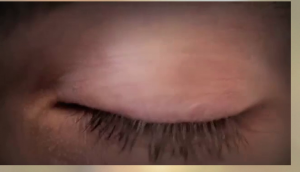
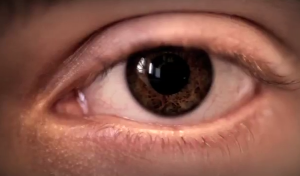 What I find to be effective about these three SNU’s is the pattern created through the framing and associations between them. Each of these SNU’s is a close up on either an eye or a mouth announcing the exact phase the user will enter. Although the verbalisation of the three categories aided in further clarification, I feel they were somewhat superfluous as they announced the clusters too explicitly. The basis of dreaming is in the crazy, fusion of experiences that lack too much clarity. Thus, hearing the three stages contradicts the intended chaotic nature of the piece. Similarly, I found the choice to not use textual aid very clever, as they would provide too much clarity for a film about the confusion of dreams. The content in itself forms patterns that enable us to distinguish between clusters. The state of total consciousness is characterised by human subjects speaking of their own dreams. For instance, a young boy speaks of his dreams regarding making movies with Quentin Tarantino. The intercutting of scenes from Tarantino movies helped in transporting me to the dream itself, thus encouraging a vicarious experience of the dreams themselves.
What I find to be effective about these three SNU’s is the pattern created through the framing and associations between them. Each of these SNU’s is a close up on either an eye or a mouth announcing the exact phase the user will enter. Although the verbalisation of the three categories aided in further clarification, I feel they were somewhat superfluous as they announced the clusters too explicitly. The basis of dreaming is in the crazy, fusion of experiences that lack too much clarity. Thus, hearing the three stages contradicts the intended chaotic nature of the piece. Similarly, I found the choice to not use textual aid very clever, as they would provide too much clarity for a film about the confusion of dreams. The content in itself forms patterns that enable us to distinguish between clusters. The state of total consciousness is characterised by human subjects speaking of their own dreams. For instance, a young boy speaks of his dreams regarding making movies with Quentin Tarantino. The intercutting of scenes from Tarantino movies helped in transporting me to the dream itself, thus encouraging a vicarious experience of the dreams themselves. 